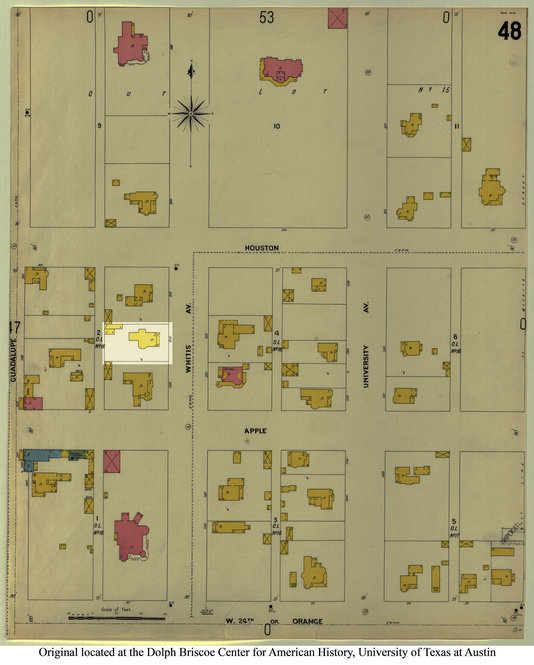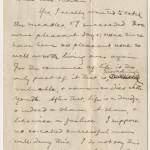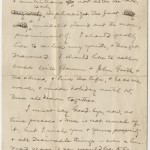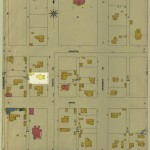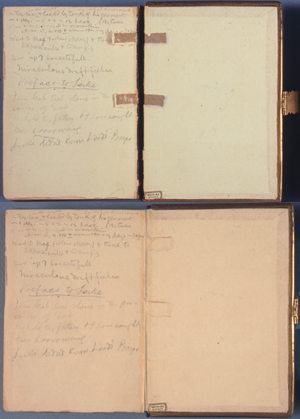When Samuel Clemens—better known by his pseudonym Mark Twain—penned a letter in London in 1900 to the widow of his childhood best friend in Austin, he had no idea that it would be preserved more than a century later in the Harry Ransom Center’s archives just four blocks south. Today the letter resides in a collection of Twain-related materials that features correspondence with longtime friends and others, including one from Clemens to P. T. Barnum.
This letter’s addressee, Mrs. Dora Goff Bowen, lived at 2506 Whitis Ave. in a neighborhood just north of the burgeoning University of Texas campus. The address, now home to The University of Texas at Austin’s hulking Jesse H. Jones Communications Center, has an interesting past. A few years after Clemens wrote the letter, 2506 Whitis became the site of one of the University’s first sorority houses, that of the newly organized Pi Beta Phi chapter. Two lots down the street lay George Littlefield’s still-new Victorian mansion, built in 1893, which maintains a grandiose presence on campus to this day.
Dora’s husband, Will Bowen, had grown up with Clemens in Hannibal, Missouri. Their friendship and escapades along the Missouri River became the basis of Twain’s books The Adventures of Tom Sawyer and The Adventures of Huckleberry Finn. Bowen and Clemens engaged in countless hijinks, including, as another letter reveals, stealing dinner from the town drunkard to feed “the hogs in order to keep them still till we could mount them & have a ride.”
Clemens’s letter to Mrs. Bowen begins abruptly: “Yes, I really wanted to catch the measles. I succeeded.” The statement refers to another episode of Will Bowen and Clemens’s childhood mischief. When a young Bowen came down with the measles, Clemens decided to join his friend in bed to catch the virus and “settle this matter one way or the other and be done with it,” as he revealed in a posthumously published autobiography.
But fans will notice in the letter a conspicuous absence of Twain’s characteristic humor and lightheartedness. The turn of the twentieth century was a difficult time in Clemens’s life. Will Bowen, with whom Clemens had been in correspondence for more than 30 years, had recently passed away. Shortly thereafter, in 1896, Clemens’s daughter Suzy died of meningitis. Around the same time, Clemens was forced to declare bankruptcy after investing $300,000—worth approximately $8,000,000 today—in the Paige typesetting machine, a dysfunctional technology that quickly became obsolete.
Those hardships are reflected in the melancholy tone of Clemens’s letter: “[T]he romance of life is the only part of it that is overwhelmingly valuable, & romance dies with youth. After that, life is a drudge, & indeed a sham. A sham, & likewise a failure.” He fantasizes an alternate timeline, in which he would rather “call back Will Bowen & John Garth & the others, & live the life, & be as we were, & make holiday until 15, then all drown together.”
Despite his apparently bleak outlook, Clemens insists in the letter that he does not “say this uncheerfully—for I have seldom been uncheerful.” Indeed, in a post-script, he indulges in some characteristic playfulness in his response to Mrs. Bowen’s previous letter: “P.S. What we did to Brown? Oh, no, I will never reveal that!”
Please click the thumbnails below to view full-size images.
